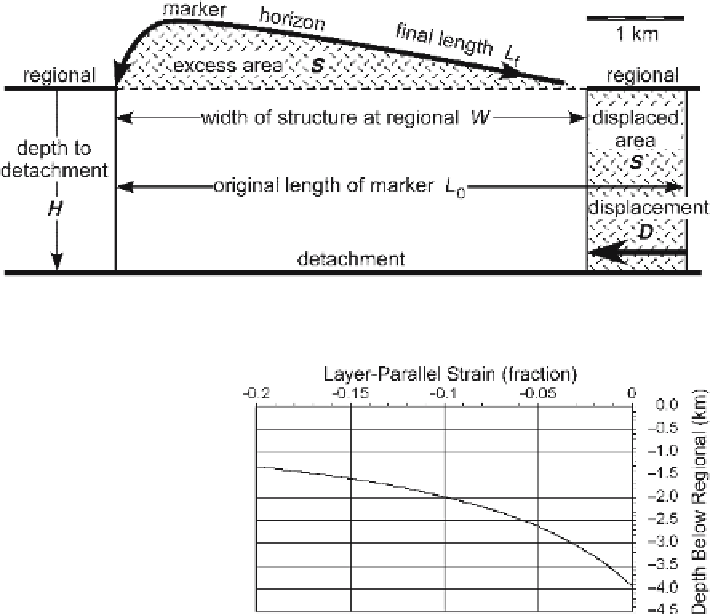Geology Reference
In-Depth Information
Fig. 11.14.
Area balanced model.
H
= 2.08 km,
L
f
= 5.422 km,
S
= 2.141 km
2
,
W
= 4.879 km,
D
= 1.028 km.
Theoretical detachment for constant bed length is
H
= 3.943 km (Eq. 11.20)
Fig. 11.15.
Detachment depth vs. strain
diagram, for the model in
Fig. 11.14, shortening negative
Calculations based on constant bed length typically show detachments that are extremely
deep for low-amplitude structures and indicate shallower detachments for higher-ampli-
tude structures, even in the same area (eg., the Appalachian profile of Chamberlin 1910).
One significant problem is the assumption of constant bed length. Previous work (Groshong
1988, 1994) has shown that bed length is not likely to remain constant and that length
changes can have a significant effect on the calculated detachment depth. For example,
the theoretical depth to detachment of the area-balanced model in Fig. 11.14 is 3.943 km
(Eq. 11.20), about 90% greater than the correct value of 2.08 km. The sensitivity of the
calculated detachment depth to unmeasured changes in bed length (sub-resolution strain)
can be demonstrated quantitatively. If the bed length changes during deformation,
L
f
=
L
0
+
∆
L
,
(11.21)
where
L
f
= observed length = final bed length (Fig. 11.14) and
L
= change in bed
length during deformation (shortening negative). Equation 11.21 is solved for
L
0
and
substituted into Eq. 11.19, giving the relationship between
D
and the changing bed
length. This relationship is substituted into Eq. 11.18 and solved for
H
to give
∆
H
=
S
/(
L
f
-
L
-
W
) .
(11.22)
∆

